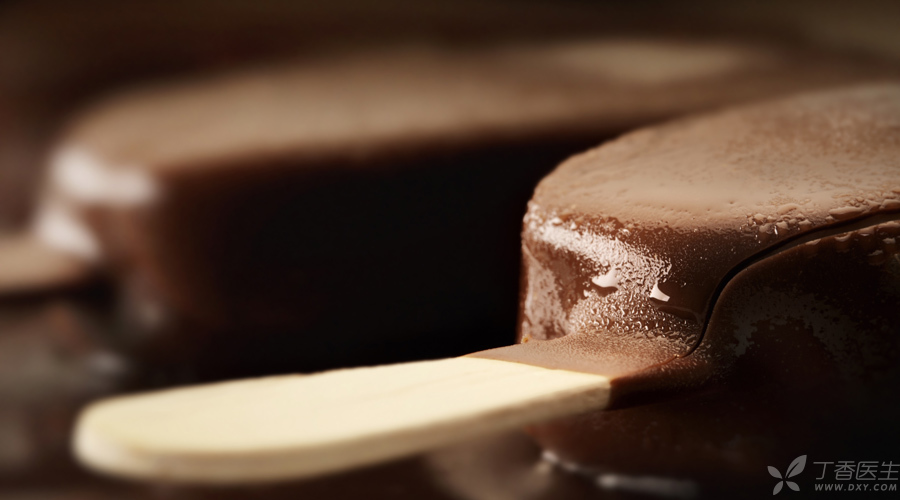
In recent days, the circle of friends has been swept by a piece of news:

In the interview report, it was found that many shopkeepers lost power or freezers were frequently opened during the process of selling ice cream, causing them to soften and deform.
This was originally a normal thing, but a nutritionist from a hospital said in the program:
If ice cream or ice cream cannot reach the required storage temperature, it will cause some changes in structure and shape. However, if it is melted and frozen again, it may produce some substances harmful to the body, such as soluble toxic proteins, amines, etc.
The weather is so hot that many people buy ice cream from supermarkets and take it home to put it in the refrigerator. It is common for ice cream to melt slightly and then freeze again.
Is eating such ice cream really harmful to health?
Ice cream tastes good, the key lies in the craft.
Generally speaking, the basic raw materials of ice cream are milk (or cream) and sugar, as well as flavoring agents, stabilizers and edible pigments.
After the raw materials are mixed well, they are sterilized and homogenized (which can be understood as mixing more evenly), and then refrigerated for several hours. Then, these raw materials are frozen while stirring. Regulating the stirring method and freezing speed is crucial to the taste of ice cream.
Air foam, tiny ice crystals and partially fused oil droplets can make ice cream taste more delicate.
For commercially sold ice cream, such ice cream is injected into a mold and frozen. Finally, the ice cream is sealed with plastic paper and stored at temperatures of-20 ° C or less.
Melting softens and tastes worse.
When the temperature rises, the unstable system of ice cream will change, for example, small oil droplets in ice cream will become large oil droplets.
When the temperature is high enough, the ice crystals dissolve, the viscosity of the whole system decreases, and the small bubbles in the ice cream gradually merge into large bubbles until they overflow from the ice cream.
In this way, ice cream has actually returned to a sterilized but heterogeneous state.
If it is frozen back at this time, the ice cream will not be so delicious because there are no key steps such as homogenization, refrigeration and stirring and freezing.

It’s not delicious, but it’s not [poisonous]
Ice cream will go through a process of [freezing-thawing-re-freezing] when it melts and then freezes. It is obviously a lack of common sense to say that this process will produce toxic substances.
This process will only affect the physical state of ice cream, and the chemical state will not change, so it cannot produce new substances-the so-called [production of some substances harmful to the body] is only imaginary.
Will bacteria breed and produce toxins after ice cream melts?
However, this statement is only [valid in theory] and will not appear in practice.
In order for bacteria to proliferate in large quantities and produce toxins, in addition to nutrients, three conditions are required:
- Sufficient strain source, suitable temperature, long enough time
However, there is little need to worry about melted and frozen ice cream.
First of all, ice cream will be sterilized during the production process, and there are very few bacteria in the sold products-even if the mildest bus sterilization is used, the sterilization effect will reach that the remaining bacteria will not exceed 1/100,000 of the starting value.
As long as the ice cream is well packaged, no external bacteria will enter.
Secondly, the suitable temperature for bacteria to grow is room temperature (20 ~ 40 ℃), which will not be reached after ice cream melts.
Pasteurized dairy products can be preserved for one to two weeks at refrigeration temperature (4 ℃). Ice cream is made of similar raw materials to milk. Even if ice cream melts from-20 ℃ to refrigeration temperature and is kept for several days before freezing back, it will not cause a large number of bacteria to produce toxins.
Ice cream sold in supermarkets has shapes. If it is higher than the refrigeration temperature, it will completely melt into liquid long ago. Even if it is frozen back, it will not restore its original appearance.
Even if shops are willing to put out such ice cream, we will not be willing to buy it, will we?
In a word, if the ice cream is only partially softened and deformed, even if the temperature is higher than 0 ℃, bacteria will not grow obviously, and the ice cream will not be poisonous if left at such temperature for a period of time.
However, melt and re-freezing are unqualified product
Usually, the ice cream we encounter [melts and freezes] is only due to power failure or frequent opening of the freezer, and the temperature does not meet the storage requirements of the ice cream in a short period of time. Therefore, the ice cream locally heats up and softens, and will deform when it is frozen again after being squeezed.
The appearance and taste of such ice cream no longer meet its original standards-from the perspective of commodities, it is also [unqualified products].
It is understandable that consumers refuse to buy such [substandard products].
However, this kind of disqualification is only [not good-looking, not delicious] and does not become [harmful food].
As a consumer, what really needs to be worried about may be that eating too much ice cream is easy to get fat.
